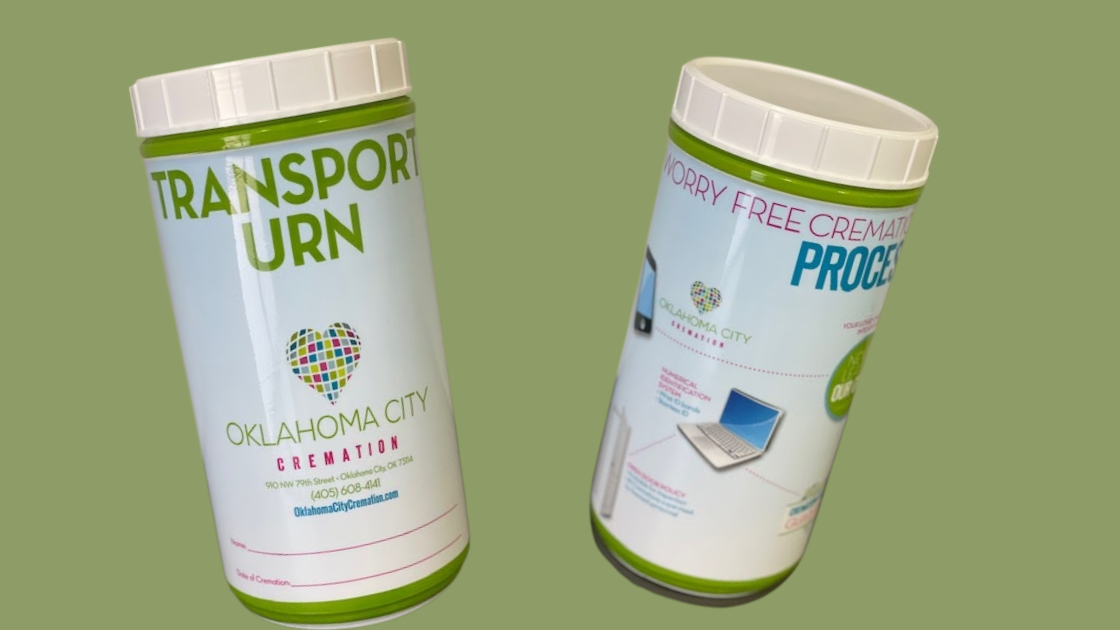Revolutionizing Temporary Cremation Containers
When looking at the history of cremation and the struggles our profession has faced in communicating the value of cremation services to the public, it’s apparent that one seemingly minor cremation product has actually played a huge role in the public’s perception of cremation as a cheap and low-value option: black box temporary cremation containers.
The black box was invented to solve a simple business problem: How can we return ashes to customers in a way that does not discourage urn sales? However, the unforeseen effects of creating a cheap, replaceable temporary urn run deeper than just making urn sales. By focusing solely on urns as a way to profit from cremation, our profession has inadvertently communicated to our consumers that cremation only involves the cremation itself and a cremation container, which in turn has cultivated a low perceived value for cremation services in general.
Today funeral professionals know that so much more can be included in the cremation experience, like traditional embalming and viewing, innovative cremation ritual experiences, and a long list of “cool things to do with ashes” to name a few. In short, to make cremation profitable, we have to shift focus beyond urn sales and think bigger picture for how to create holistically valuable experiences for cremation families. Focusing on creating meaningful cremation experiences necessarily includes considering the packaging in which families initially receive their loved ones’ cremains. To totally integrate an elevated perceived value into the cremation experiences that we build for families, the standard black box temporary urn needs a redesign, rebrand, and overall revolution.
Problems with the Black Box
The problems that the black box causes for cremation businesses are many-fold. The customary temporary urns used today are not only unappealing design-wise but have faulty latches, are made of non-recyclable plastic, are hard to travel with, and aren’t user-friendly in general. According to some cremation and deathcare experts, these flaws in the standard black box have played a role in devaluing cremation services across the board. Justin Crow, Founder and CEO of Parting Stone, elaborates on how traditional black boxes have actually done more harm than good to our businesses,
“Deciding how to return cremated remains to customers is a design problem (and I am a design junkie). How do you take something repulsive and give it a sense of value? Packaging has a huge impact on how people feel about content. The customer desperately wants to cherish and love this pile of gray matter, so even a small effort should satisfy them. A good solution will ultimately make the grieving process smoother for the family, shape their overall outlook and value-assessment of the cremation experience, and make them love your funeral home’s services.
If a person handed my dead mother to me in a zip-tied plastic bag in a plastic box with a frustrating latch I would never ever want to see them again. Your families will acknowledge the container you choose every day for the next 5-10 years and the current solution looks marginally better than a cereal box.
I believe the temporary cremation container has contributed massively to the current cremation price-gouging war fueled by suspicious customers who place no value on cremated remains. Providing the black box communicates: ‘We think this box accurately represents the value of cremated remains, and that is what you should think about them too.’ It’s not a surprise, then, that customers want a $200 cremation and a $25 urn – we’ve been priming the public to expect this level of value for the past 70 years.”
According to Justin, in selecting a container that lacks value, we are communicating to our families that cremains and cremation services also lack value. That sets the standard for the rest of the cremation experience for that family. Elevating the functionality and appeal of temporary urns will in turn elevate the value of cremation. Buying services, and products, and planning experiences around cremation will then be viewed as an investment instead of an unfair price gouge.
To learn more about Parting Stone and how offering solidified remains can empower your families and grow your business, signup for Parting Stone’s monthly webinar, here.
Revolutionizing the Black Box
There is one cremation business owner who has already rethought temporary cremation containers and come up with a revolutionary answer to many of the inherent problems of the black box.
Darin Corbett, Managing Director of Corbett Funeral and Cremation and Oklahoma City Cremation realized that traditional black boxes weren’t serving his cremation families well, and set out to create better temporary cremation containers. Darin turned to his community and the families that his business serves to problem-solve and find a solution. Darin’s families expressed that some of the problems they have faced with traditional black boxes, beyond aesthetics, were that they were difficult to travel with, difficult to handle, and difficult to use cleanly during scattering rituals.
On the Deathcare Decoded podcast Darin explains how improving the design of temporary cremation containers that his companies use has been beyond valuable to his business and his families:
Our company’s purpose is to reduce stress and reduce effort wherever we can, because oftentimes we can see those stressors and traps before a family does. And this was one of them: “What do I do with this box?” It’s not pretty, so families wanted to hide it, and it didn’t make whatever that final thing they were going to do with the cremains any easier. I thought this might be just a small problem for families, but it turns out that so many families like it.
With feedback from families, we came up with what we have. It’s cylindrical, and for those that want to bury it’s not by accident that it’s actually the exact same circumference as a standard post hole digger. For those that are going to scatter, it’s rigid enough and sturdy enough that you don’t have to use a secondary internal liner that has to be brought out, cut, and is messy. We wanted to have the dignity designed into it, so it has a deep threaded lid and a tamper evident seal around it so if someone is stopped by TSA or Highway Patrol it looks intentional. You can open it up, scatter what you want, then close it back easily and reseal it. The container also has labeling on it that can’t be done in a home or office easily. So when those officials like TSA look at it they know it came from a commercial crematory. So, it meets everyone where they are doesn’t cost anything. The other side of it is: What happens after someone scatters if they aren’t going to bury? We didn’t want them to just pitch it, so it’s made out of an HDPE plastic that is highly recyclable. We even incentivize people to bring it back to us, we’ll recycle it, and give you a credit. Or you can just put it into recycling after scattering.
These containers meet our needs too….We were able to brand this free custom transport urn that has the person’s name on it, it’s done professionally, and it’s just a step above. So now I can actually have something branded that goes out and meets the families needs, and our business needs. And, the way that we buy them, it’s actually less expensive than those black boxes. So from an economic standpoint it also makes sense, we just looked at it differently.“
The key factor in the custom temporary urns used by Oklahoma City Cremation are that they were designed with intention, based on feedback directly from families. They are white and clean, with a professionally designed, easy to read label, and are cylindrical with a secure screw on lid.
Oklahoma City Cremation’s families can now travel with cremains more easily, and scattering rituals are cleaner and more efficient as the screw-on lid design is leak-proof and eliminates the need for a zip tie and plastic bag. The container is also the exact size of a standard post hole digger so that it can be easily buried. Furthermore, none of these changes have impacted Oklahoma City Cremation’s urn sales detrimentally:
“There were other funeral directors that I got feedback from and their biggest fear was “if you do this the family won’t buy an urn” but that’s not the case. If you just ask the family the question “what do you envision doing with the ashes, before we even talk about a vessel, let’s talk about what you’re going to do with them. Then let’s talk about how you can best pick that vessel, whatever that is, to meet your needs and desires to help you along your path.
We get together and we talk about things, and it’s a very easy transition. We have very nice very expensive urns, and we have nice, but less expensive urns all the way down to our plastic transport container. And sometimes the conversation should go ‘what you want to do with your loved one can actually be done much more elegantly in these ways, here is how you do it…here’s how you document it, here is an ap for gps tracking where you scatter and want to travel, etc.’ Be that kind of advocate for your family. It has never cost us an urn sale. It helps us start the conversation in which we are not seen as someone trying to up-sell a family things that they don’t need.”
While Darin’s container design is copyrighted, he is happy to talk to any funeral director who has questions about the design process or who is interested in creating their own temporary cremation container.
Building Value into Cremation
Improving temporary urns in order to elevate the perceived value of cremation will ultimately help families understand that cremation can be a delux service in and of itself. There is no evidence to support the idea that making nicer temporary urns will negatively impact urn sales. On the contrary, we’ve seen that better temporary urns will help families see a higher inherent value in other products and services that go along with cremation, which means they’ll be willing to invest more in planning cremation rituals and memorial experiences. The bigger picture is that profit from cremation shouldn’t be based on urn sales alone anyway, and there are tons of other services and products that can be incorporated into meaningful cremation experiences. Including revolutionizing temporary cremation containers into our strategy for building value in cremation is an important step on the way to elevating the perceived value of cremation for years to come.
To hear the full story and learn more about Oklahoma City Cremation’s intentionally designed temporary cremation container, listen to the full episode of Deathcare Decoded with Darin Corbett, “Revolutionizing Temporary Cremation Containers,” here.





